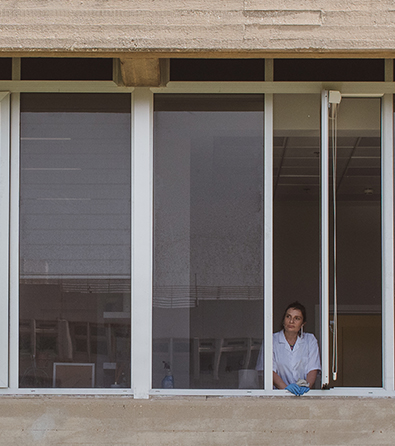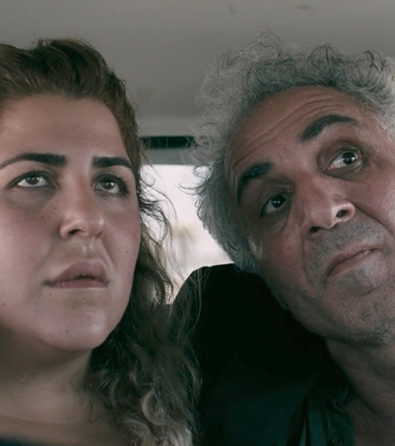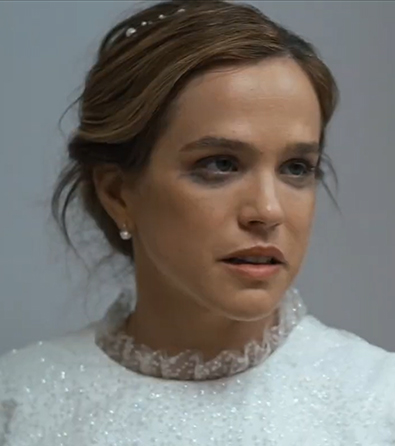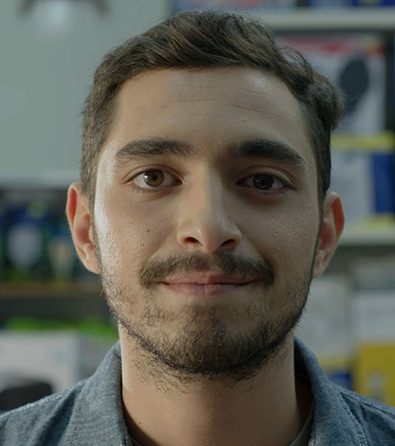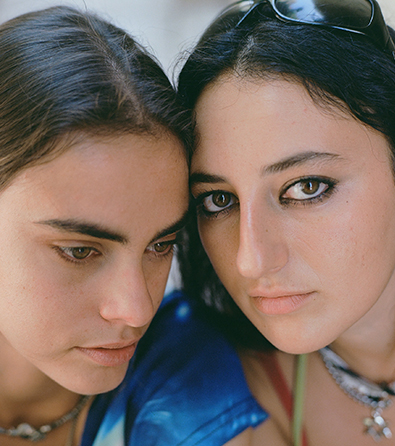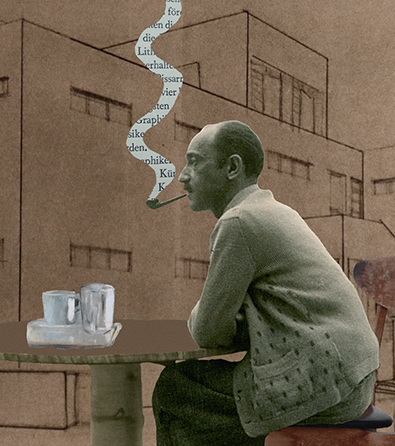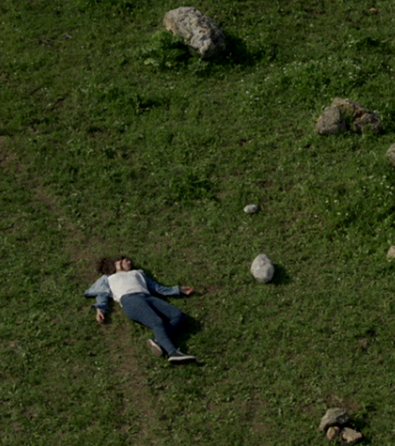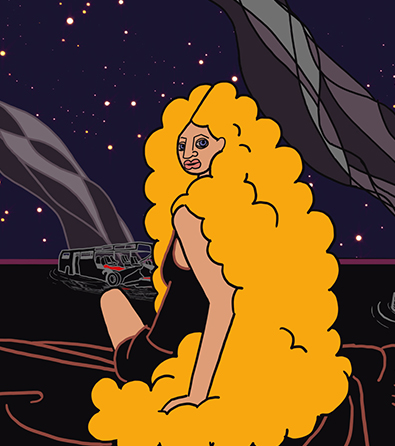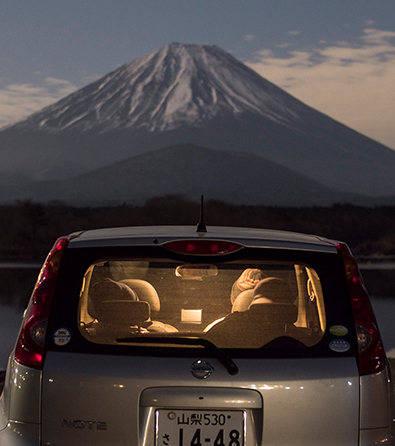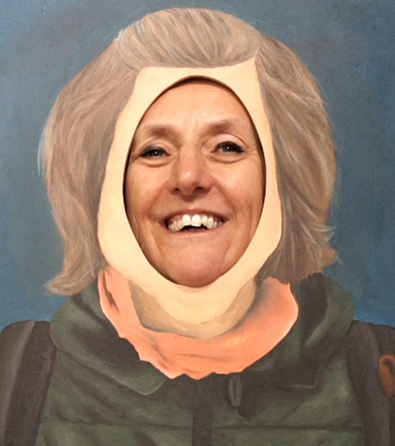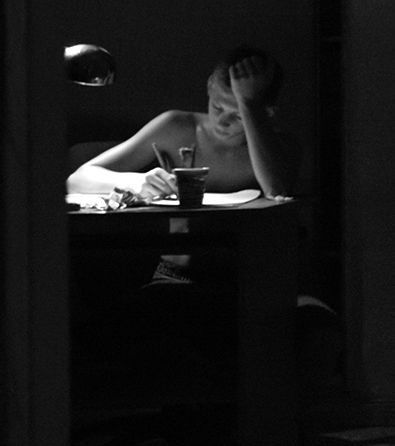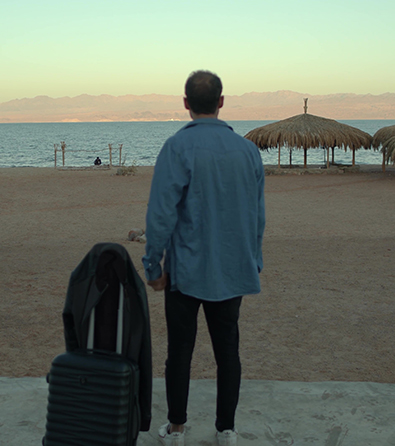The Short Film Try It (4.5 minutes) is available at the top of the page.
* To watch this film, please approve YouTube/Vimeo cookies via the blue cookie icon at the bottom left of the screen.
Nothing in the short film Try It is simple to pin down. Created by Israeli filmmaker Gadi Yampel and Taiwanese filmmaker Jiang Xin-Zhe, the film received an Honorable Mention at the Tel Aviv International Student Film Festival (TISFF) 2025. In just four and a half minutes, it delivers a cascade of formal, conceptual, and verbal inventions that keep it surprising from start to finish. Unlike anything else, and as the title both hints and invites, you simply have to try it to understand.
Although the plot eschews conventional dramatic and screenwriting rules, it can be summarized simply: a lonely, hungry Israeli living in Taiwan discovers the wonders of a 7-Eleven. He tries to persuade a local friend, likely lonely as well, to join him for a night of eating and wandering through the streets of Taipei.
The filmmakers describe the film in more impressionistic, symbolic terms: “Can a feeling be explained? Two set out on a motorcycle journey in pursuit of an elusive sensation. On a night of hunger and spiraling roads, the convenience store becomes a luminous oasis.”
Indeed, the feeling the film seeks to capture (a word the filmmakers underscore in their synopsis) resists reduction to a few sentences. It is elusive and refuses to fit the definitions and distinctions we are used to.
As an experimental film (or video art; it is not entirely clear how the creators would define it), Try It is unlike anything else and elicits responses different from those prompted by a conventional narrative film. Even so, and this is a large part of its strength in my view, the cinematic sources that shaped it, both aesthetically and thematically, are fairly evident.
For instance, the influence of Hong Kong director Wong Kar-wai is clear, especially from Chungking Express and In the Mood for Love, which also center on solitary, alienated figures in large Asian cities. As in Wong Kar-wai’s films, which render the nights and neon lights of Asia’s vast metropolises as a surreal, dazzling playground that holds great loneliness, Try It treats its setting as a character in its own right. The way the streets in general, and the convenience store in particular, are designed and filmed positions them as fundamental elements in the work. In other words, this film would not look or resonate the same if it had been shot elsewhere, in New York or Tel Aviv. Taipei flows through its veins.
Try It invites us to decode it, to ascribe meaning to it, and it encourages repeat viewings. Unlike avant-garde films I know, whether canonical or not, this short film flows smoothly and is a pleasure to watch. A bit like a witty commercial in the best sense, it is playful, inventive, visually striking, and surprising.
Though each viewer may read it differently, a few constants emerge at the core: an exploration of loneliness and estrangement in relation to place, captured in the sound of Hebrew set against street signs in scripts many Israeli viewers cannot read; and an exploration of friendship and human connection across distant worlds (people speaking different languages who, through the quiet magic of cinema, still manage to understand one another).
Alongside all this, or even above it, hovers the film’s attitude toward capitalism and Western consumer culture, which is not always clearly critical. The choice of 7-Eleven, emblematic of American consumer culture, as the meeting place for the two characters gives the film an overall sense of inexplicable attraction to what the West represents, tempered by a measure of aversion.
Try It is not only an encounter between East and West, languages, people, places, and cultures. On the formal and aesthetic level, it fuses styles and techniques to create an exceptional hybrid viewing experience. Perhaps, echoing the impression Taipei left on the Israeli filmmaker, the film unfolds with the logic of a dream, or a psychedelic trip, where the laws of physics and cinema do not necessarily apply. Long exposure, stop motion, and frequent shifts in aspect ratio are just some of the artistic choices that make it feel as if anything can happen.
Whether we define it as a short film, video art, or choose not to define it at all, Try It is an invitation to taste an unfamiliar dish that, even when its flavors and ingredients are recognizable, feels new, elemental, and one of a kind. Worth a try.
